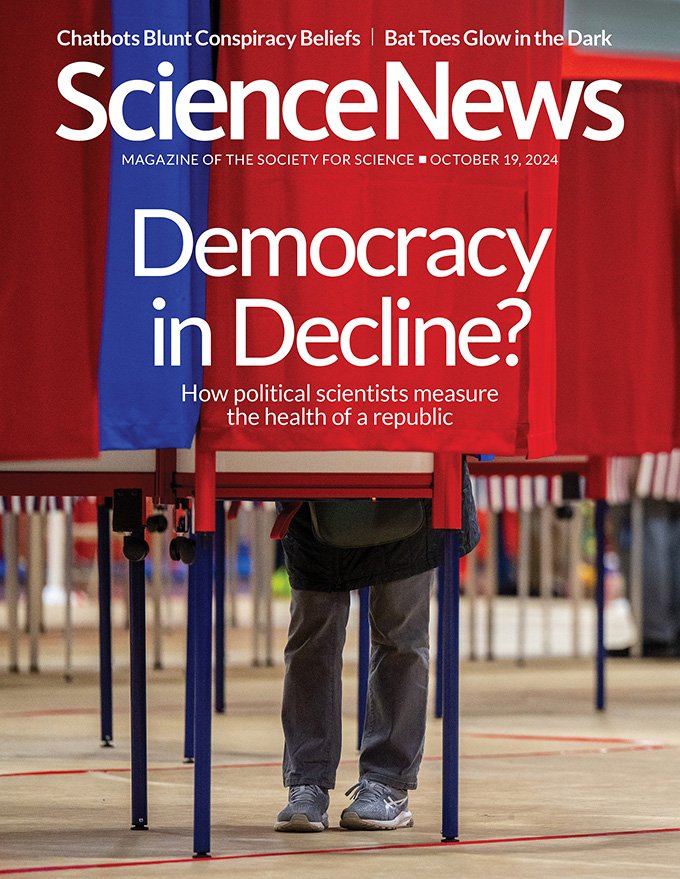The mysterious glowing toes of Mexican free-tailed bats have piqued the curiosity of scientists and readers alike. The hairs on the bats’ toes light up under ultraviolet light, but the reason for this phenomenon remains unknown. While some have speculated that the glowing toes might attract prey, biologist Fernando Gual-Suárez of the National Autonomous University of Mexico in Mexico City believes this is unlikely. Unlike sit-and-wait predators that use photoluminescence to lure prey, bats are active aerial hunters. Additionally, the photoluminescent toe hairs would be difficult for potential prey to see, making them an ineffective hunting tool. Gual-Suárez suggests that more studies are needed to determine the function of the glowing toes. The photoluminescence could be a byproduct of the hardened structure of the hairs, used for grooming or sensing, or it could be a form of communication with other bats during flights or roosting.
In another intriguing development, scientists have observed the rare “golden channel” decay of subatomic particles called kaons. This decay, in which a kaon produces a pion, a neutrino, and an antineutrino with the mediation of W and Z bosons, could potentially challenge the standard model of particle physics. Particle physicist Cristina Lazzeroni of the University of Birmingham in England explains that if the decay were to stray from standard model predictions, it would point to new physics that is largely unknown. Some physicists have proposed the existence of new particles, such as a Z’ boson or a leptoquark, that could act as intermediaries in the decay process.
Lastly, a correction has been issued for a previous article titled “Earth’s temperature highs and lows.” The graph included in the article inadvertently reversed the labels for curves showing global temperature and atmospheric CO2 data. Additionally, both curves displayed fifth-percentile values rather than the average (50th-percentile) values. The corrected version of the graph is now available for reference.
Overall, these fascinating discoveries and corrections highlight the ongoing quest for knowledge and understanding in the fields of biology and particle physics. As scientists continue to unravel the mysteries of the natural world, new insights and revelations are sure to follow. Title: The Impact of Climate Change on Biodiversity
Climate change is a pressing issue that is affecting ecosystems and biodiversity around the world. The rise in global temperatures, melting ice caps, and extreme weather events are all contributing to changes in habitats and threatening the survival of many plant and animal species.
One of the most significant impacts of climate change on biodiversity is the loss of habitat. As temperatures rise, habitats such as forests, wetlands, and coral reefs are becoming increasingly inhospitable for many species. This is forcing plants and animals to migrate to find suitable habitats, which can lead to competition for resources and increased risk of extinction.
Another major impact of climate change on biodiversity is the disruption of food chains and ecosystems. Many species rely on specific environmental conditions and relationships with other species to survive. As these conditions change, some species may be unable to adapt, leading to a decline in population numbers and a loss of biodiversity.
In addition to habitat loss and disruptions in food chains, climate change is also causing shifts in the timing of seasonal events, such as migration, breeding, and flowering. This can have cascading effects on biodiversity, as species may become out of sync with their food sources or predators, leading to population declines and further ecosystem disruptions.
It is crucial that we take action to mitigate the impacts of climate change on biodiversity. This includes reducing greenhouse gas emissions, protecting and restoring habitats, and implementing conservation measures to help species adapt to changing conditions. By taking these steps, we can help preserve the incredible diversity of life on Earth and ensure a sustainable future for generations to come.

